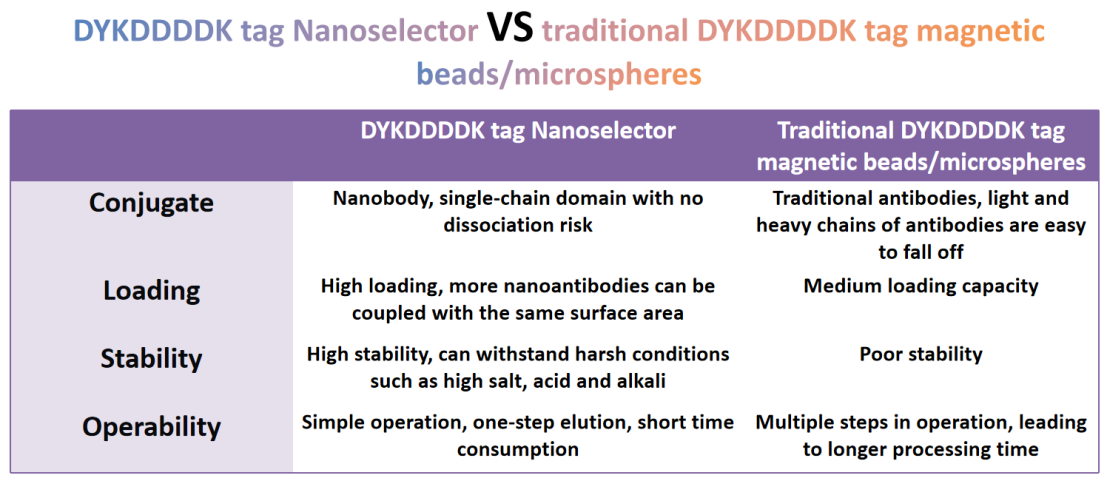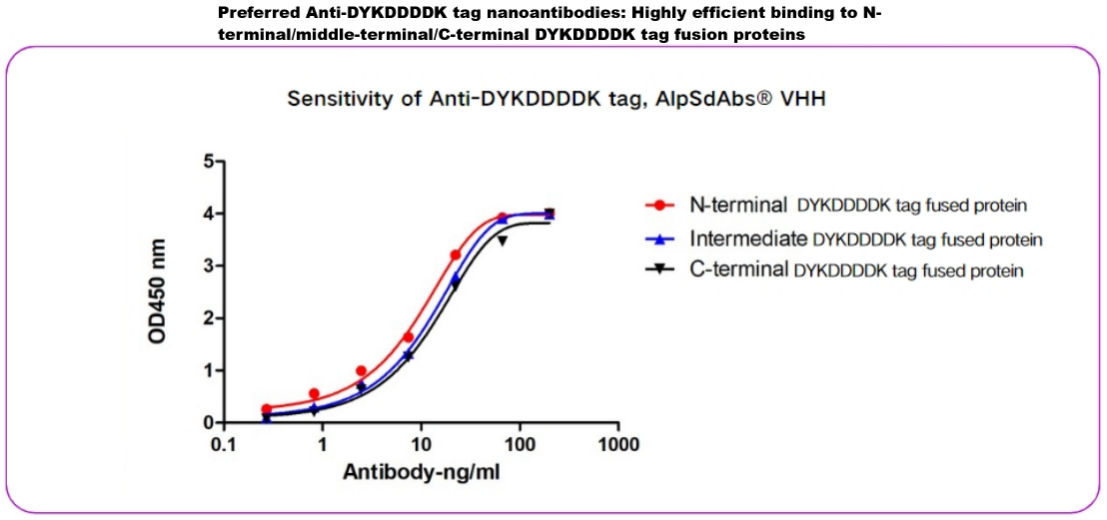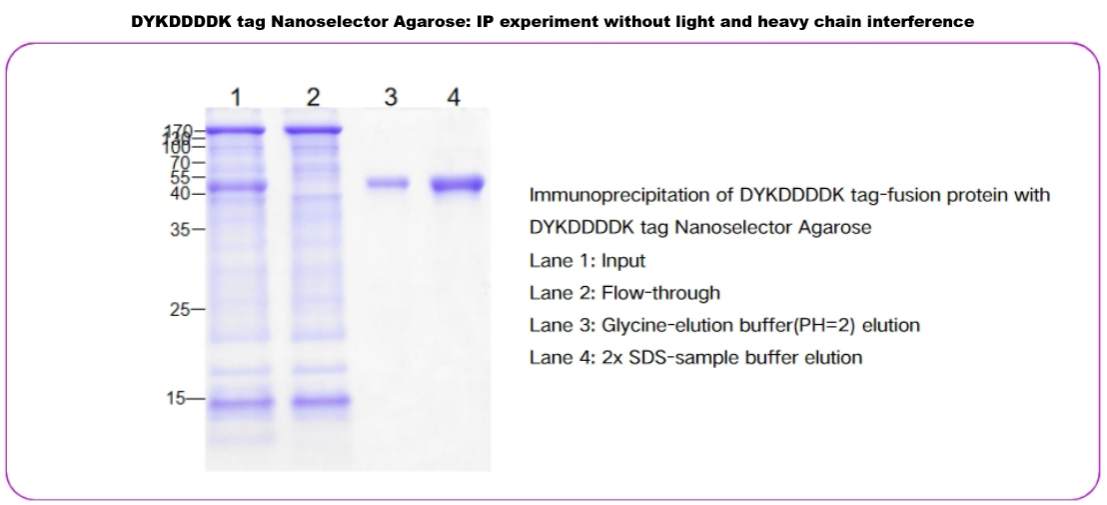
- Home
- Research Navigation
-
Products
- Recombinant antibody
- Tag Nano-Antibody
- Recombinant Tag Antibody
- Nano-Secondary Antibody
- Recombinant Secondary Antibody
- For IP Nano-Secondary Antibody
- For WB Nano-Secondary Antibody
- Nanoselector
- Smart Ligands®
- Smart Booster
- SmartCapture® For Purification
- Flow Cytometry Antibody
- Recombinant VHH
- Antibody Biosimilar
-
Service
- Technical support
- About
- Blog
DYKDDDDK tag Nanoselector- No light and heavy chain interference in IP experiment
DYKDDDDK tag (also known as the FLAG tag) is a man-made tag sequence consisting of only eight amino acids. Because it does not interfere with the structure and function of target proteins, it is widely used in bacterial, yeast, and mammalian cell systems, making it a valuable tool in biological research. Immunoprecipitation (IP/CoIP) of DYKDDDDK-tagged target proteins is one of the most common experiments researchers use the DYKDDDDK tag for. However, IP experiments are laborious and can result in unsatisfactory results. The most common issue is the interference introduced by the light and heavy chains of the DYKDDDDK-tagged antibody in traditional DYKDDDDK-tagged magnetic beads/microspheres, which can obscure or mask the target bands. Consequently, competitive elution with a flag peptide is often used as a secondary option, but this is more time-consuming and can also result in low elution efficiency. To address these shortcomings of traditional DYKDDDDK-tagged magnetic beads/microspheres, AlpVHHs has introduced the DYKDDDDK tag Nanoselector, which eliminates light and heavy chain interference in IP experiments. The DYKDDDDK tag Nanoselector, which is composed of high-affinity and high-specificity nanoantibodies coupled to magnetic beads/microspheres, avoids the occurrence of light and heavy chain interference at the source, making subsequent experiments easy and worry-free.



Advantages
1. Easier-NO Light and heavy chain interference
The Nanoselector series uses nanobodies as conjugates. These are single-domain antibodies that, once covalently coupled to magnetic beads or microspheres, do not dissociate under harsh conditions such as acidic elution or boiling in SDS-containing buffer. Therefore, downstream applications like Western blotting are free from interference caused by antibody heavy or light chains.
2. Higher Loading
Compared with traditional antibodies, nanoantibodies are only 1/10 of their molecular weight and can be coupled to solid phase media at a high density, greatly improving the loading capacity of the Nanoselctor series products. 10uL beads can bind 10~20ug fusion protein.
3. More stability
Nanoselector has extremely high stability because of the simple structure, nanobodies give the Nanoselector series exceptional stability. In addition to functioning in physiological salt concentrations, DYKDDDDK tag Nanoselector can tolerate harsh environments such as high salt or extreme pH. This robustness offers researchers more flexibility in choosing experimental conditions.
4. Faster (2H)
With extremely high affinity, the Nanoselector series quickly and stably binds to target proteins, typically within 10-30 minutes. The DYKDDDDK tag Nanoselector reduces workflows that traditionally take 1-2 days to under 2 hours. This time efficiency, coupled with consistent and reproducible results, greatly enhances experimental throughput.
AlpVHHs' DYKDDDDK tag Nanoselector is available in magnetic beads and microspheres, which can effectively avoid the light and heavy chain interference in Western detection.
Code | Description | Applications | Size |
016-101-002 | IP,CHIP,MS,Purification | 0.5mL(20 rxns) | |
016-101-003 | IP,CHIP,MS,Purification | 0.5mL(20 rxns) |
AlpVHHs also provides DYKDDDDK tag detection antibodies. One antibody can meet multiple detection needs such as WB/IP/IF.
Code | Description | Applications |
016-303-001 | WB,ICC/IF,ELISA,Flow Cyt | |
016-303-005 | WB, ELISA | |
016-303-007 | Anti-DYKDDDDK tag, AlpHcAbs® Mouse IgG2b antibody(iFluor488) | ICC/IF,Flow Cyt |
016-303-008 | Anti-DYKDDDDK tag, AlpHcAbs® Mouse IgG2b antibody(iFluor594) | ICC/IF,Flow Cyt |
016-303-009 | Anti-DYKDDDDK tag, AlpHcAbs® Mouse IgG2b antibody(iFluor647) | ICC/F,Flow Cyt |
016-203-001 | WB,ICC/IF,ELISA,Flow Cyt |

